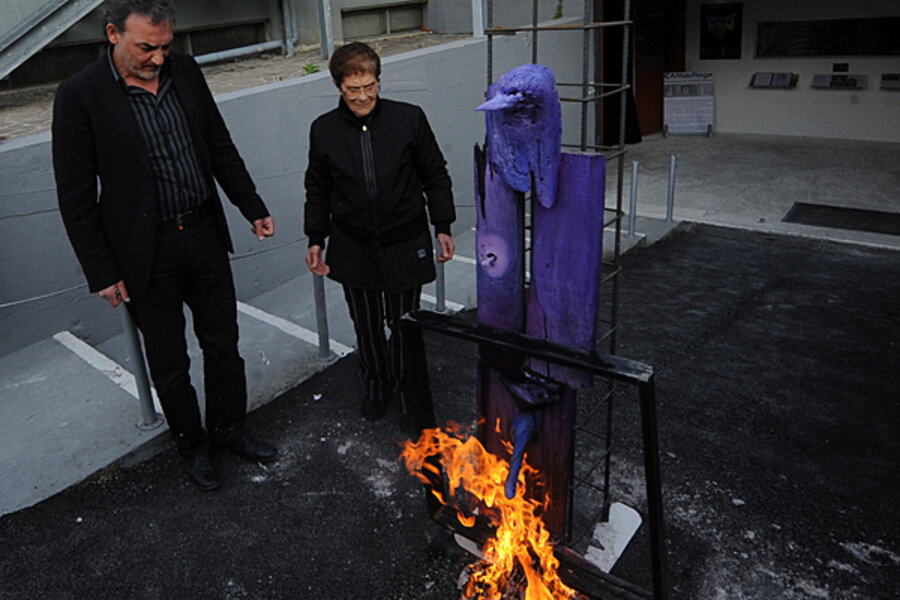Italian museum sets its art on fire to protest lack of government funding
Loading...
| Cambridge, Mass.
Is a “Fahrenheit 451”-style fire the solution for Italy’s increasingly debt-ridden museums?
Perhaps not, but it’s certainly a powerful wakeup call to a government and populace busier worrying about the euro crisis and unemployment statistics.
So says Antonio Manfredi, the director of the Casoria Contemporary Art Museum (CAM), which is located in a small town near Naples, Italy. A little less than a month ago, Mr. Manfredi started to burn the gallery’s collection piece by piece, saying that he didn't have the funds for upkeep. “Our artworks will end up being destroyed anyway, since institutions are not sustaining us,” he told Italian daily Corriere della Sera before starting the protest.
The first to go was “Promenade,” a canvas by French artist Severine Bourguignon, who approved of the protest and followed it on Skype. “I hope that this action will help the Italian government reconsider CAM's situation,” she wrote in The Guardian. “Without funds, CAM will be closed and its collection will effectively cease to exist.”
Bourguignon’s piece was followed by many others, as meticulously recorded on CAM’s Facebook page.
Some contended that the protest is only the provocative performance of an attention-seeking artist – Manfredi is himself a painter, sculptor, and photographer – and that because CAM is not technically a public museum, the government doesn't have to support it (although most private museums also receive some funding from the Ministry of Culture).
But there is no doubt that Italy’s culture sector has been hit hard by cuts because of the economic crisis. The Italian daily Republica reported that between 2010 and 2011 the Ministry of Culture’s funding saw a 14.5 percent decrease, dropping from 1.7 million ($2.2 million) to 1.5 million euros.
Despite its world-class cultural wealth, Italy invests in the culture sector less than other countries. According to a government report, in 2010 the Ministry of Culture received only 0.21 percent of the country’s budget (compared, for instance, to 1 percent in France). It’s no surprise then that several prestigious institutions are going through a rough time.
MAXXI, Rome’s contemporary museum, which opened only two years ago, has predicted losses of 11 million euros for 2012 through 2014. Naples’s and Parlermo’s contemporary art museums are also in deep financial trouble.
In the meantime, some organizations representing workers in the culture sector are protesting against low wages and the lack of adequate benefits. In a letter recently published in Corriere della Sera, they stressed the importance of what they do, which they say goes well beyond the workplace. “We produce intangible but necessary goods on a daily basis: intelligence, relations, social welfare,” they wrote.
Investing in culture is also the recipe called for by renowned writer Dacia Maraini, who in a recent trip to the United States was surprised by the interest Americans still have in Italian culture and history. “Shouldn’t we focus obstinately on what we can do best instead of competing with China in producing cheap jeans?” Maraini recently wrote in Corriere della Sera.







